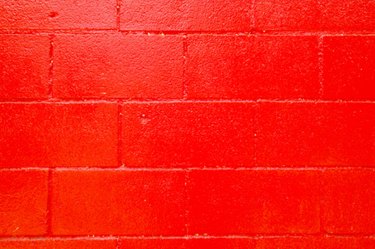Things You'll Need
500-grit sandpaper
Sponge
Towel
100-grit sandpaper
Canvas drop cloths
Painter's masking tape
Flat, eggshell or satin paint
Roller frame
Polyester paintbrush

Most paints are formulated with chemicals that provide them with varying levels of sheen. While enamel, gloss and semi-gloss paints have high sheens, flat, satin and eggshell paints have little to no sheen. If you are unsatisfied with the amount of sheen on a painted surface, you can make it look duller by utilizing friction-based abrasion methods; however, if the surface is very large, this technique could prove tedious. In this case, your best bet is to repaint the surface with low-sheen paint. Learn the proper way to condition the existing glossy finish for adequate adhesion, or the new paint will flake.
Dull Existing Paint
Step 1
Sand the glossy painted finish lightly with very fine, 500-grit sandpaper. Do not use sandpaper with a lower grit, or you will likely carve noticeable scars into the finish. Do not overdo it. Lightly scour the paint until the sheen appears duller.
Video of the Day
Step 2
Dampen a soft sponge. Ensure that the sponge is clean and free from trace oils and cleanser residues.
Step 3
Wipe the sanded painted finish with the sponge. Dry the paint with a towel.
Repaint With Low-sheen Paint
Step 1
Abrade the glossy painted finish or the new, less-glossy paint won't adhere. Scour the glossy paint with 100-grit sandpaper until the existing finish feels slightly rough.
Step 2
Place drop cloths beneath the existing glossy finish. Attach painter's masking tape to adjacent surfaces.
Step 3
Apply a particular type of paint based on your personal taste. For a low, muted sheen, apply eggshell or stain paint. For no sheen at all, apply a flat paint. Apply the paint using a roller. Roll vertically while applying gentle pressure. Touch up the surface as needed, using a polyester brush. Let the new finish dry for at least 2 hours.
Video of the Day